
Sir Henry Morgan was a Welsh privateer, plantation owner, and, later, Lieutenant Governor of Jamaica. From his base in Port Royal, Jamaica, he and those under his command raided settlements and shipping ports on the Spanish Main, becoming wealthy as they did so. With the prize money and loot from the raids, Morgan purchased three large sugar plantations on Jamaica.

Maracaibo is a city and municipality in northwestern Venezuela, on the western shore of the strait that connects Lake Maracaibo to the Gulf of Venezuela. It is the second-largest city in Venezuela, after the national capital, Caracas, and the capital of the state of Zulia. The population of the city is approximately 2,658,355 with the metropolitan area estimated at 5,278,448 as of 2010. Maracaibo is nicknamed "The Beloved Land of the Sun".
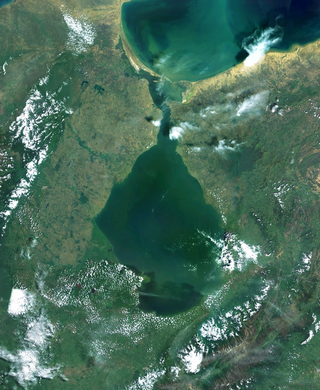
Lake Maracaibo is a brackish lake located in northwestern Venezuela, between the states of Zulia, Trujillo, and Mérida. Hydrologically, it is a semi-enclosed bay off the coast of the Gulf of Venezuela. Lake Maracaibo is commonly considered a lake, though due to its current geological characteristics, it should not be considered as such. With a surface area of 13,512 km2 (5,217 sq mi), it is the largest lake in South America and one of the oldest on Earth, having formed disputably as a lake 36 million years ago in the Andes Mountains.

San Juan de Ulúa, now known as Castle of San Juan de Ulúa, is a large complex of fortresses, prisons and one former palace on an island of the same name in the Gulf of Mexico overlooking the seaport of Veracruz, Mexico. Juan de Grijalva's 1518 expedition named the island. On March 30, 1519, Hernan Cortés met with Tendile and Pitalpitoque, emissaries from Moctezuma II's Aztec Empire.

Alonso de Ojeda was a Spanish explorer, governor and conquistador. He travelled through modern-day Guyana, Venezuela, Trinidad, Tobago, Curaçao, Aruba and Colombia, at times with Amerigo Vespucci and Juan de la Cosa. He is famous for having named Venezuela, which he explored during his first two expeditions, for having been the first European to visit Guyana, Curaçao, Colombia, and Lake Maracaibo, and later for founding Santa Cruz.

During the Spanish colonization of the Americas, the Spanish Main was the collective term for the parts of the Spanish Empire that were on the mainland of the Americas and had coastlines on the Caribbean Sea or Gulf of Mexico. The term was used to distinguish those regions from the numerous islands Spain controlled in the Caribbean, which were known as the Spanish West Indies.

Jean-David Nau, better known as François l'Olonnais, was a French pirate active in the Caribbean during the 1660s.

The Battle of Lake Maracaibo also known as the "Naval Battle of the Lake" was fought on 24 July 1823 on Venezuela's Lake Maracaibo between fleets under the commands of Republican Admiral José Prudencio Padilla and royalist Captain Ángel Laborde.
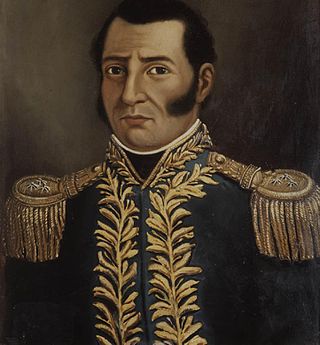
Admiral José Prudencio Padilla López was a Neogranadine military leader who fought in the Spanish American wars of independence and a hero in the battles of independence for Gran Colombia .
He was the foremost naval hero of the campaign for independence led by Simón Bolívar, and the creator of the first Navy and Admiral of Great Colombia. He is best known for his victory in the Battle of Lake Maracaibo on 24 July 1823, in which a royalist Spanish fleet was defeated.

Michel de Grammont was a French privateer. He was born in Paris, France and was lost at sea in the north-east Caribbean, April 1686. His privateer career lasted from around 1670 to 1686 during which he commanded the flagship Hardi. He primarily attacked Spanish holdings in Maracaibo, Gibraltar, Trujillo, La Guaira, Puerto Cabello, Cumana and Veracruz.

The Bombardment of Fort San Carlos occurred during the Venezuelan Crisis on January 17, 1903, when two warships of the Imperial German Navy tried to penetrate into Lake Maracaibo but were repulsed by the garrison of Fort San Carlos de la Barra after a brief exchange of fire.
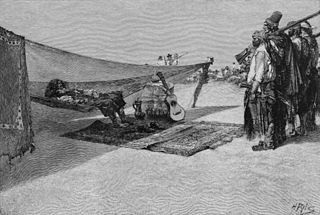
Between 1665 and 1857, Caribbean pirates and filibusters operated in Lake Nicaragua and the surrounding shores. The Spanish city of Granada, located on the lake, was an important trading centre for much of its early history so it was a prime target for pirates such as Welshman Henry Morgan and freebooters like William Walker.
Jose Antonio Arizabalo Orobio was a Spanish military who played an important role in the Spanish American wars of independence.
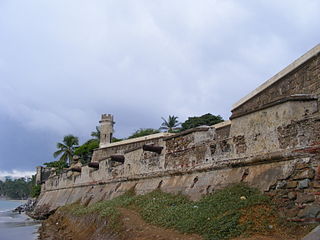
San Carlos de Borromeo Fortress is a colonial fortress in the Bay of Pampatar in the northeast of Isla Margarita, Venezuela. It was completed in 1684 for protection against the constant threat of pirates. The fortress was ransacked several times before Venezuela gained independence from Spain. Today the castle has been restored and serves as a museum.

San Felipe Castle is an eighteenth-century star fort protecting Puerto Cabello in Venezuela. It was named in honour of Philip V, King of Spain at the time of its construction in the 1730s. It has an alternative name Castillo Libertador, explained by its connection with Simón Bolívar, known as El Libertador because of his role in Latin American independence.

Michel le Basque was a pirate and flibustier from the Kingdom of Navarre in the southwest of France. He is best known as a companion of François L'Olonnais, with whom he sacked Maracaibo and Gibraltar.
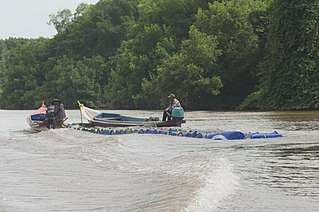
Piracy off the coast of Venezuela increased during the crisis in Venezuela. The situation has been compared to piracy off the coast of Somalia, which was also caused by economic collapse. As Venezuelans grow more desperate, fears of increasing incidents and range of piracy have been reported. Venezuelan pirates often smuggle weapons, drugs and sex trafficking victims. Authorities have also been involved in piracy near the coast of Venezuela.
Edward Dempster was a buccaneer and privateer active in the Caribbean. He is best known for his association with Henry Morgan.
The civil war of 1848-1849 was an armed conflict in Venezuela between the conservatives, led by José Antonio Páez, against the newly established Great Liberal Party, founded and led by José Tadeo Monagas.

Henry Morgan's Panama expedition also known as the Sack of Panama, was an expedition that took place between 16 December 1670 and 5 March 1671 during the later stage of the Anglo-Spanish War. English privateers and French pirates commanded by notable Buccaneer Henry Morgan launched an attack with an army of 1,400 men with the purpose of capturing the rich Spanish city of Panama off the Pacific coast.



















